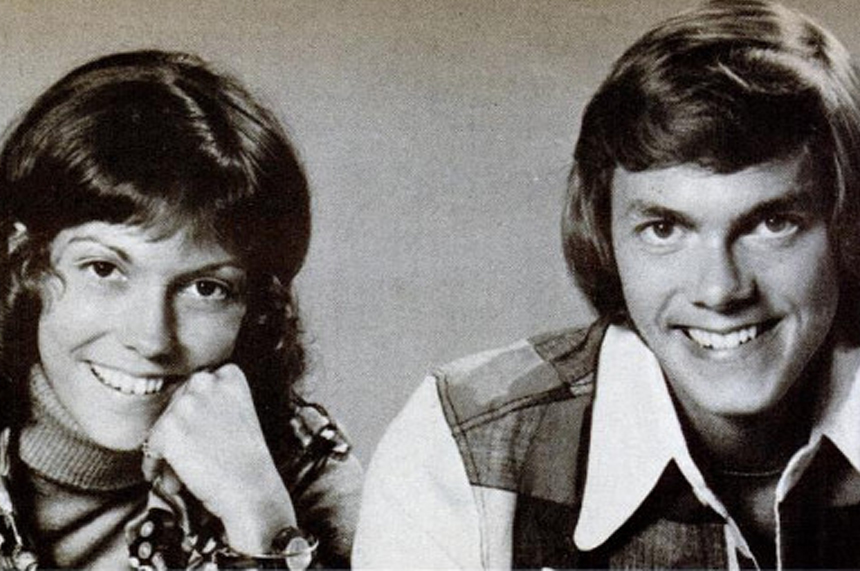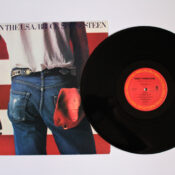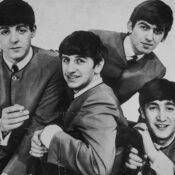If ever a pair of decades had the social upheaval of the times reflected in their music, it was the ’60s and ’70s. In between the British Invasion, Motown, and metal on one end, and punk, funk, disco, and hip-hop on the other, there was room in the middle for a more mellow zone on the airwaves. Driven by acts like The Carpenters, this new brand of soft rock had broad appeal. So much appeal, in fact, that it carved out its own chain of stations. This is the story of the rise of soft rock radio.
Rock and roll had been growing and changing since its inception. Ballads were always part of the mix, but those were songs that were deliberately written as love songs or down-tempo numbers. As the basic set-up for rock artists tilted toward the guitar/bass/full drum kit configuration in the 1960s, songs overall got a little harder and faster. That didn’t stop the big bands from letting up on occasion; The Rolling Stones had “As Tears Go By,” of course. But as more and more artists entered the field, each act expressed a different relationship with dynamics. Some went hard all the time, and others found a lighter path.
Frank Sinatra released “Summer Wind” in 1966 (Uploaded to YouTube by Frank Sinatra)
A forerunner to the softer rock was the Easy Listening format. Built on instrumental music and orchestra-backed vocalists like Frank Sinatra and Bing Crosby, the “beautiful music” style earned its own chart at Billboard in 1967 as popular music’s various subgenres grew further apart. Easy Listening would eventually be discontinued as a chart and would be replaced by Adult Contemporary in 1979.
“To Love Somebody” (1967) by The Bee Gees (Uploaded to YouTube by Beat-Club)
When the term hard rock came into use in the mid-to-late 1960s, it was applied to British Invasion acts like The Who and The Kinks, English blues scholars like Cream, and American acts like The Jimi Hendrix Experience and Iron Butterfly. Soft rock started to get referenced as a term surrounding the artists who were more influenced by pop and folk rather than the blues-aware, four-on-the-floor “hard rock” bands. A prime example were The Bee Gees; as a band, they veered to the pop side of things, but then started to lean more heavily on balladry with 1967’s “New York Mining Disaster 1941” and “To Love Somebody,” and 1968’s “Massachusetts” and “I Started a Joke.”
“Summer Breeze” by Seals & Crofts (Uploaded to YouTube by Rhino)
A number of other artists began to coalesce around the lower end of the Mohs scale while hitting higher places on the charts. Established hitmakers like Neil Diamond, Carole King, and The Hollies were lumped into the “soft rock” descriptor. Up and coming acts that would expand the category included The Carpenters, John Denver, Carly Simon, and Anne Murray. Folk artists like James Taylor and Cat Stevens were also considered soft rock in terms of radio airplay, as were artists moving into pop from other fields, like Barbra Streisand and Barry Manilow. Fifty years ago this summer, one of the keystone songs of Soft Rock, “Summer Breeze” by Seals and Crofts, shot to #6 on the Hot 100. Also in 1972, Neil Young (supported by Linda Ronstadt and James Taylor on backing vocals) took “Heart of Gold to #1;” the only #1 in Young’s storied career, it’s been consistently listed among the best of soft rock classics.
“Reelin’ in the Years” by Steely Dan (Uploaded to YouTube by Steely Dan)
While the songs had popular success on pop radio formats, it wasn’t until 1973 that KNX / FM 93 in Los Angeles made the bold move of switching its entire playlist to what they called “mellow rock.” The station would be instrumental in creating awareness of artists like Janis Ian and Steely Dan while playing the familiar mix of acts like Elton John, Joni Mitchell, and others. It was an influential move, as a number of other stations across the country (like Denver’s KIMN and Chicago’s WBBM) gravitated to a lighter sound. The acts played were in diametrical opposition to bands that blew up in the 1970s like Kiss and Led Zeppelin, and were entire universes removed from the disco, punk, and hip-hop bubbling up in New York. Seventies soft rock fairly boomed with acts like the reconfigured Fleetwood Mac, America, and Air Supply.
“Sailing” by Christopher Cross (Uploaded to YouTube by Rhino)
The heyday of classic soft rock ended by 1983 when KNX and many other soft rock stations went Top 40. The wholesale changeover was a result of the wild success of MTV. The channel, launched in 1981, largely ignored the soft rock artists and quickly created a flood of popular new artists drawn from the U.S. and the U.K. A combination of established stars (Michael Jackson, Bruce Springsteen), newer faces (Prince, Madonna) and TV-ready English bands (Duran Duran, The Police) flipped the landscape overnight. Much like rock had dethroned easy listening on Billboard in the 1950s, the MTV artists pushed aside soft rock. Perhaps the greatest exemplar of this was what happened to Christopher Cross; the singer-songwriter won five Grammys and an Oscar in 1981, but couldn’t land any further Top 40 hits after 1984. Shifting tastes and an emphasis on video sent Cross, er, sailing out of the mainstream.
“Blinding Lights” by The Weeknd (Uploaded to YouTube by The Weeknd)
Though the tides of music shift every ten years or so, the pinnacle period of soft rock still holds a place in the hearts of fans. The closest approximation to the soft rock sound today is probably found on Billboard’s Adult Contemporary chart, where acts like Adele, Celine Dion, and Ed Sheeran reign alongside veterans of the format wars like Elton John. Even that chart is changing, though, as younger acts like The Weeknd have experienced major success; his “Blinding Lights” spend 35 weeks at #1 across late 2020 and 2021.
Despite these shifts, websites like TheMellowSound.net painstakingly recreate the listening experience of KNX-FM 93 in its prime, and the biggest songs of the era are only a few clicks away on various streaming services. So even though the charts change and listening methods evolve, that same summer breeze can indeed make you feel fine.
Become a Saturday Evening Post member and enjoy unlimited access. Subscribe now




Comments
Here in the Philippines, soft rock still reigns supreme in rural areas and the introduction of KNX FM tribute on themellowsound.net is a breathe of fresh air among us Filipinos. I stream it on my phone connected to a boombox with bluetooth receiver so it sounds like i’m listening to it on the radio.
Thank you for the history. As an “Open Format” DJ that has started in the digital world this was very informative as I was always trying to “crate dig” for what I would have called “blue eyed soul” and songs with a similar feel to it. I am creating a playlist for a corporate client that asked for soft rock, so this was a great place to start.
I too noticed an abrupt change away from the soft- rock sound as 1982 morphed into 1983 and MTV became popular. It is a theme that I explore in my book about 1980s and ‘90s popular music.
It’s a bit tardy, I know, but I wanted to thank you for your piece on the history of the soft rock radio format and your generous mention of KNX/FM as well as its current Internet iteration, themellowsound.net.
I am still proud, lo these many years later, to have co-created the format along with my old college friend, Rodger Layng. We were originally hired at KNX/FM, he as program director and me as music, in September of 1970. We were tasked with creating a temporary format, a place-holder, if you will, for the station until it was fully equipped with studios and automation equipment and would then switch its format to “beautiful music.” (Or as I call it, “elevator music.”) Both Rodger and I had experience in that format and that was what we were hired to do.’
Between the two of us, we came up with the genesis of the soft rock format as that intended “placeholder.” However, much to our surprise, we saw an immediate increase in our listenership. After we placed regularly in the top 20 stations and continued to move toward the top ten, our general manager let us keep going and didn’t notify the big guys at CBS in New York.
You were correct that the sound had its origins in MOR and Easy Listening. You were also correct that it was in 1973 when we fine tuned the music list down to what became known generically as “soft rock.” It was in that year that Rodger was promoted to the general manager of the CBS FM station in San Francisco and I moved into the program director’s job and started weeding out Barbra Streisand, Barry Manilow, et al.
I stayed with the station until 1979, at which time I made a career change and became a writer in television, working for WKRP in Cincinnati.
Cut to many years in the future and I am now a semi-retired person at the age of 79, living in Vancouver, Washington and neighbors with my old friend and KNX/FM News Director, Chris Ames. About three years ago, Chris heard about what a group of older radio veterans were doing in setting up a tribute station to KNX/FM on the Internet. We both knew instantly that we wanted to be a part of that, contacts those guys and threw in with him. You hear both of us on air, Chris doing The Odyssey File, which I write, and me doing the station liners and promos along with Mary Price.
I wanted to also give you a heads up about a documentary on the history of soft rock set to air started in the third week of November on Paramount +. I don’t know its title yet but I flew down to L.A. some months ago to be interviewed for it.
I’m delighted that numbers of our old listeners are finding us and, thanks to people like you, our audience is slowly growing. Many thanks again to you for the lovely article.
As the founder and executive producer of http://www.themellowsound.net, and speaking for my entire Stream Team of Mellow Rock purists, we appreciate the mention and support of our homage. We invite all readers to become listeners, and promise to not disappoint.
I really like this article too. It looks like Sinatra helped light the match for soft rock on his own, and with daughter Nancy. Very influential, they were front and center on that 1967 Post cover. Thanks for the ‘Summer Wind’ link. Nothing but the best from Ol’ Blue Eyes, of course.
The Beatles themselves (and later solo) dabbled in soft/softer rock quite nicely. The Left Banke exemplified the sound with hits like ‘Walk Away Renee’ and the beautifully haunting ‘Pretty Ballerina’. The latter featuring the oboe, kind of exclusive to the mid-’60s (“I Got You Babe” also) without ties to the earlier or later parts of the decade. As soft rock as it got, actually.
Another favorite group were/are The Fifth Dimension. Soft rock combined with gentle soul sung by an angel, Marilyn McCoo. I got to meet her in 2002 at the Whole Foods on Coldwater Canyon. Just as sweet and gracious as you’d imagine this lovely woman to be.
Thanks for link of ‘Summer Breeze’. It was and is a very defining soft rock classic. I loved ‘Hummingbird’ off the same album. It was a product of its time which with an entirely different vibe and mindset, never to return. I was honored to have gotten to write record reviews for Carly Simon’s ‘Hotcakes’ and Cat Steven’s ‘Buddha and the Chocolate Box’ in the 11th grade for the school paper. I didn’t get to write one for Steely Dan’s ‘Pretzel Logic’ but they all came out around the same time in early ’74. Joni Mitchell’s ‘Court and Spark’ also. Thanks for ‘Reelin’ in the Years here. Saw them at the Hollywood Bowl in ’96.
Neil Young’s ‘Heart of Gold’ is still so wonderful to hear now. Same thing with America’s ‘A Horse With No Name’ popular at the same time. The Carpenters consistently had hits between 1969 and ’75. I think soft rock was subliminally an antidote to the ugliness in the world at that time. Vietnam, Watergate. One thing after another.
Musically it created a relaxing soft spot for people that maybe didn’t like rock otherwise and loved the peaceful easy feeling alternative. Although I might have loved blasting Deep Purple’s ‘Highway Star’ at home back then, it didn’t mean I wasn’t looking forward to hearing The Carpenters or The Captain & Tennille immediately afterward. Anne Murray’s ’74 remake of the Beatles ‘You Won’t See Me’ and The Carpenters upbeat saxophone ’74 ‘Please Mr. Postman’ were far superior to either the Marvelettes or Beatles similar versions of ‘Postman’.
‘Blinding Lights’ here show there’s a good song or two to be had even in the dark shadows of today’s bleak musical universe. I’ll take it.
The article , “When soft rock reigned”, was both entertaining and well written. I would love to see more articles like this in the future.